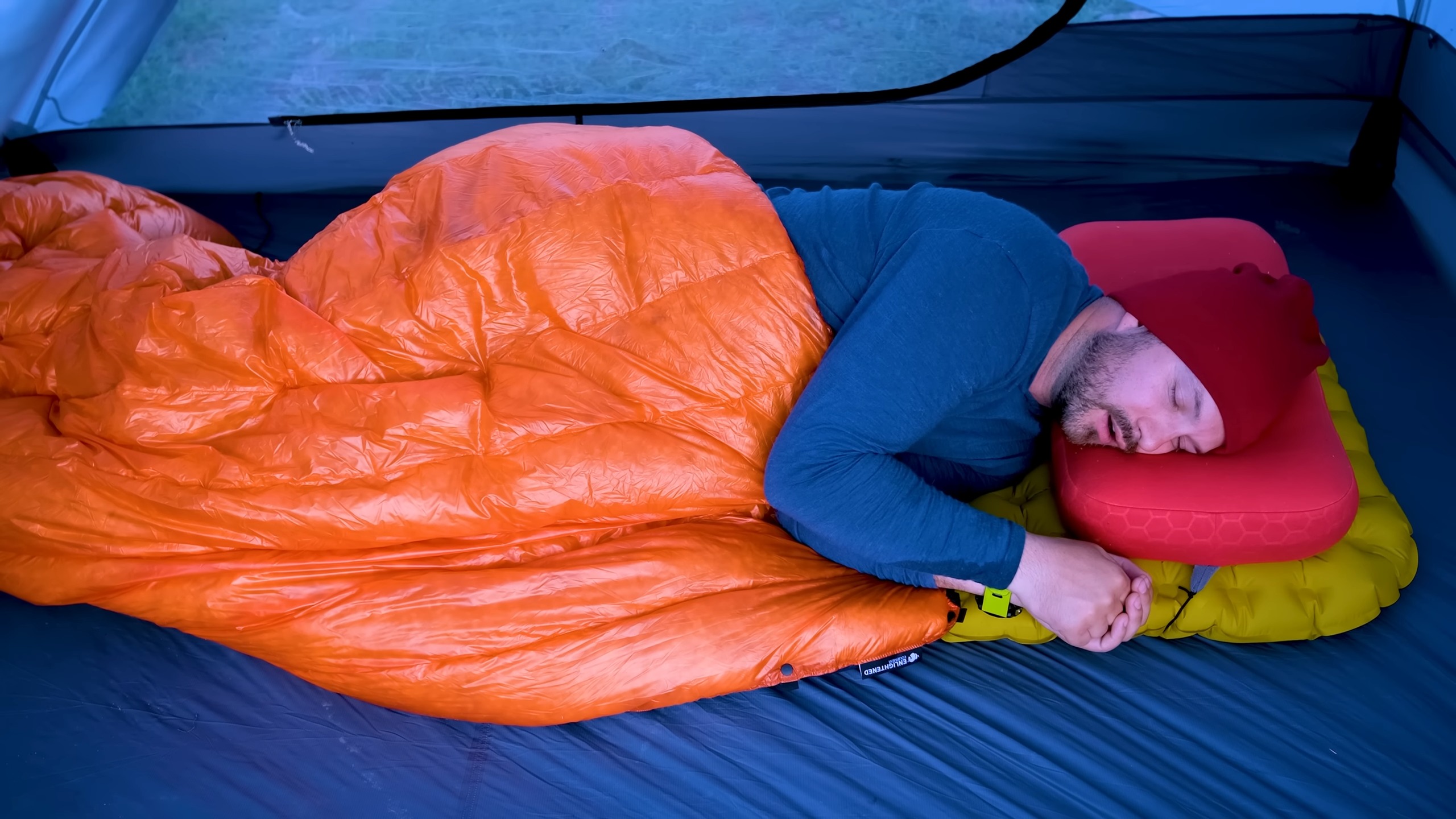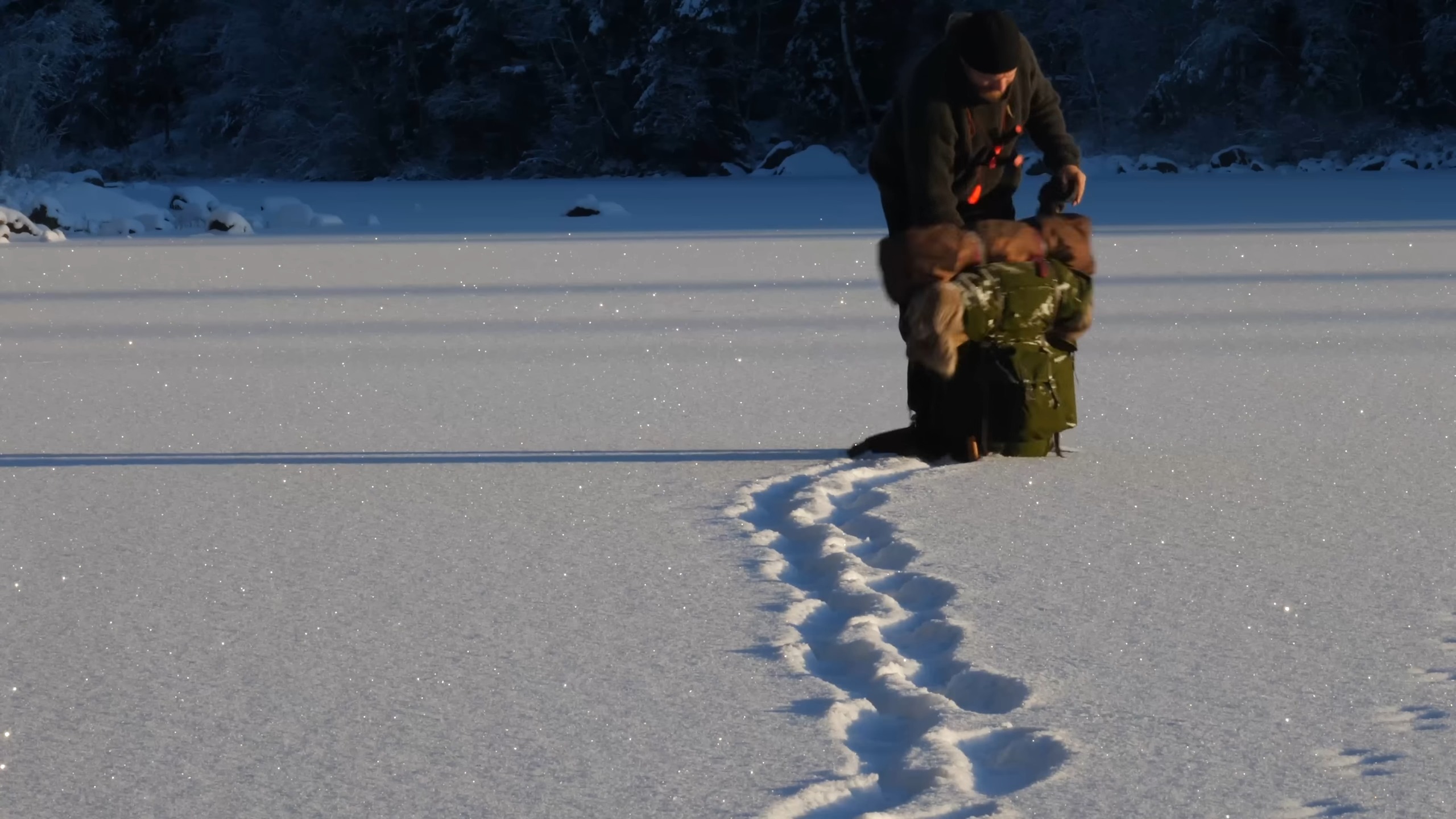As a seasoned outdoorsman who has spent countless nights under the stars, I can say that primitive camping is the quintessence of the wilderness experience. This form of camping strips away the modern comforts and conveniences to which we’re accustomed, challenging us to engage directly with nature.
Primitive camping isn’t just about survival; it’s a deliberate choice to immerse oneself in the environment and live momentarily as our ancestors did. This is probably the most important reason for its popularity.
Let me guide you through this concept.
Required Traits for Primitive Camping

Primitive camping is characterized by its simplicity and minimalism. It’s about making do with less and finding satisfaction in the basic necessities.
The tent size depends on the number of accomplices. If there’s more than two of you, you should pick a 4-person camping tent.
This form of camping demands a certain ruggedness and adaptability, as it often involves forgoing the amenities that are available at developed campsites. It shouldn’t be confused with stealth camping since primitive camping is only about the method, without going into legitimacy.
The focus is on self-sufficiency and the ability to thrive in the outdoors with limited resources.
The traits that define primitive camping include:
- Self-sufficiency: The ability to rely on one’s skills and resources.
- Minimalism: Taking only what is necessary and nothing more.
- Resilience: The capacity to adapt to changing conditions and challenges.
- Awareness: A heightened sense of the environment and potential hazards.
- Respect for Nature: A commitment to preserving the natural beauty and resources.
At the end of the day, the most crucial trait is a profound respect for the wilderness and an eagerness to learn from it. A deep-seated respect for the wilderness that fosters a leave-no-trace ethic.
Washing and maintaining you sleeping bags should be minimal during the trip. That’s why you should wash the sleeping bags before.
How does it compare to other types of camping?
| Type | Location | Amenities | Level of Comfort | Interaction with Nature | Duration |
|---|---|---|---|---|---|
| Dry | Designated campgrounds | No hookups | Moderate | Moderate | Usually short |
| Stealth | Undesignated areas | None | Low | Low | Single night |
What is the Essential Gear?

Embarking on a primitive camping adventure means paring down to the essentials. The gear you bring must be functional, durable, and as lightweight as possible.
Here’s are some of the fundamental gear needed for a primitive camping trip:
| Category | Gear |
|---|---|
| Shelter | Clean, ultralight tent, tarp, or hammock |
| Sleep System | Compact sleeping bag and insulating pad |
| Cooking | Portable, maintained stove or fire-starting materials for a campfire |
| Tools | Multi-tool, knife, and durable rope |
| Navigation | Map, compass, and possibly a GPS device for emergencies |
| Lighting | Reliable headlamp or flashlight with extra batteries |
| First Aid | Comprehensive first aid kit tailored to the environment |
Each item is chosen for its utility and necessity, ensuring that you can carry everything you need on your back without the burden of excess.
What are the Skills You Should Obtain?
The skills required for primitive camping are as important as the gear you carry. These skills ensure that you can navigate the challenges of the wilderness with confidence.
Here’s a list of the essential skills for a successful primitive camping trip:
| Skill | Description |
|---|---|
| Fire Building | Knowing how to safely and efficiently start a fire in various conditions, unless you chose a stove |
| Shelter Building | The ability to construct a shelter from natural materials if needed |
| Water Procurement | Finding and purifying water from natural sources |
| Food Procurement | Understanding of foraging, fishing, or hunting (where permitted) |
| First Aid | Competency in handling medical emergencies with limited resources |
| Leave No Trace | Practicing minimal impact camping to preserve the environment |
These skills are not just about survival; they’re about fostering a deeper connection with the land and its resources.
Finding the Perfect Site
Choosing the right location for your primitive camping trip is crucial. It can mean the difference between a serene experience and a problematic one.
Consider the following when selecting your site:
- Legal Status: Ensure camping is allowed and you have the necessary permits.
- Water Access: Proximity to a water source is essential for hydration and cooking.
- Safety: Avoid areas prone to natural hazards like flooding or avalanches.
- Environmental Impact: Choose a site with durable surfaces to minimize your impact.
- Privacy: Look for a spot that offers solitude and a chance to connect with nature.
The ideal site is one that feels like part of the landscape, where you can exist in harmony with your surroundings.
What are the Benefits?

The rewards of primitive camping are many, and they touch on every aspect of our being. Here are some of the benefits:
- Physical Fitness: The physical activity involved enhances overall health.
- Mental Clarity: Disconnecting from technology allows for mental rejuvenation.
- Skill Development: Each trip hones your wilderness skills.
- Environmental Connection: You develop a closer bond with nature.
- Simplicity: Living with less can lead to a greater appreciation for life’s basic joys.
These benefits make primitive camping not just a pastime, but a transformative experience.
Planning and Preparing

Planning and preparing for a primitive camping trip is an exercise in detail-oriented forethought and self-sufficiency. It begins with thorough research of your intended destination, which includes understanding the terrain, climate, potential hazards, and any regulations that might be in place.
This information forms the foundation of your trip plan, which should include a detailed route, alternative escape routes in case of emergency, and a timeline that you share with someone outside of the expedition. Additionally, preparing a comprehensive packing list tailored to the specific conditions of your destination is crucial.
Physical preparation is just as important as your gear and supplies. Depending on the demands of your trip, a regimen of physical conditioning may be necessary. This could include cardiovascular training, strength training, and hikes with a loaded backpack to simulate the weight you’ll be carrying.
Mental preparation is also key; familiarizing yourself with survival skills such as fire starting, shelter building, and first aid through courses or self-study can increase your confidence and ability to respond to challenges.
Practicing with your gear before the trip — setting up your tent, purifying water, and pick the right backpack stove — will ensure that you are ready to use your equipment effectively in the field. Risk management is a critical component of planning for a primitive camping trip.
This involves identifying potential risks and developing strategies to mitigate them. It’s essential to have a clear communication plan in case of emergencies, including knowledge of the nearest points of assistance and how to reach them.
Weather can change rapidly in many environments, so it’s important to have a reliable method to receive weather updates. Lastly, understanding and respecting your own limits and the limits of your group will prevent pushing into situations that could lead to injury or distress.
Etiquette and Best Practices
Primitive camping offers an authentic return to nature, demanding a high level of respect for the environment and adherence to certain etiquette.
When you venture into the wilderness, you’re stepping into a world that operates under ancient laws of balance and harmony. It’s our responsibility to ensure our presence doesn’t disrupt this balance.
This means following a set of best practices that go beyond mere rules and regulations—it’s about cultivating an ethic of stewardship and consideration for both the land and other campers. Best practices for primitive camping are rooted in the Leave No Trace principles, which serve as a guide to minimize our impact.
This includes being mindful of where you set up camp, managing waste properly, and respecting wildlife and plant life. It’s also about being considerate of other campers, maintaining the quiet and peace that so many seek in nature.
FAQs
How do you store food while primitive camping?
Use bear-proof containers or hang your food in a tree, well away from your sleeping area.
Can you go primitive camping in any season?
It is possible, but different seasons require different gear and preparations.
Is primitive camping safe?
It can be safe with proper preparation, awareness of your surroundings, and adherence to safety guidelines.
Can You Go Primitive Camping in an RV?
No, primitive camping typically involves tent camping or sleeping under the stars, as RVs require facilities not available in remote areas.
Summary
In my extensive experience, I’ve seen how primitive camping can shape individuals and their outlook on life. It’s a powerful way to reconnect with the natural world, challenge oneself, and find peace away from the bustle of modern life.
As we look to the future, the principles of primitive camping—respect for nature, minimal impact, and self-reliance—will be more important than ever.
It’s up to us, the community of outdoor enthusiasts, to preserve these practices for generations to come.
Hey everyone, I’m Jared. Outdoor life wasn’t something I inherited. My parents had never been on a trail or in a tent. The outdoors found me another way. My best friend in middle school had a deep appreciation for nature, and his enthusiasm rubbed off quickly. We spent countless afternoons trekking through local trails, soaking up everything we could along the way.
That interest never faded. Through college, I kept hiking and spending as much time outdoors as possible. After junior year, I took a break from school to chase a dream: completing the Appalachian Trail. I made it through, but not without setbacks. I spent nearly every dollar I had on gear—some pieces were solid, but others let me down hard. One highly praised backpack barely survived a week. Watching money vanish like that stung. No one deserves to be misled.
Too many reviews felt like fluff. I knew something had to change. I started asking other hikers and survivalists what they looked for, what they struggled with, and what they wish they had known sooner. Over time, a clear picture formed. People didn’t just need help picking gear—they needed to avoid unnecessary purchases. They wanted clear answers, honest reviews, and practical advice.
That’s when GearDesciple began to take shape. It started as a passion project and became a trusted source for survival, hunting, and everyday carry insights.
As the site grew, so did the workload. Late one night, I called my brother Matt and pitched the idea of joining forces. He jumped in, and it turned out to be one of the best moves I’ve ever made. His dedication and insights strengthened the site, and together we’ve built something we’re proud to share.